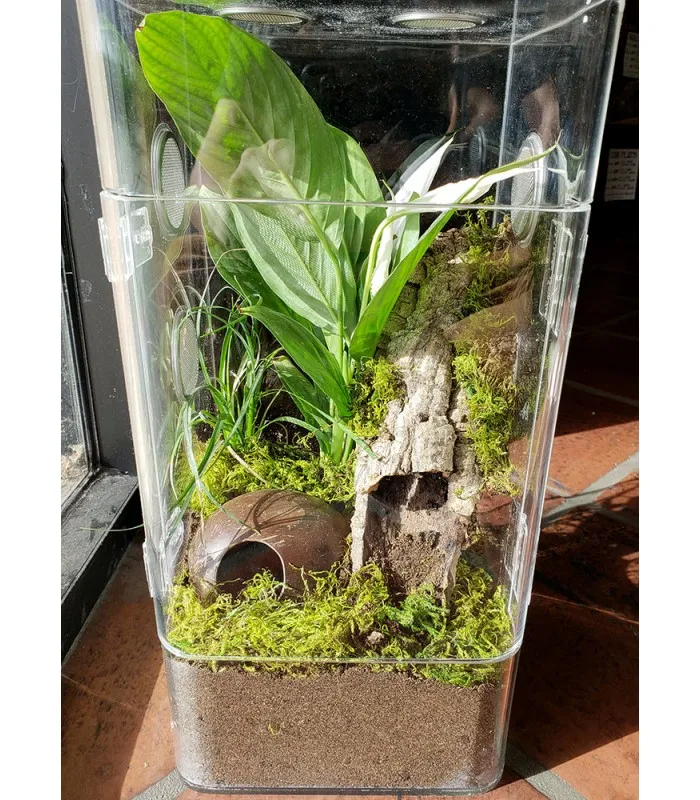Choosing the Best Tarantula Enclosure
Choosing the right tarantula enclosure is crucial for the health and well-being of your eight-legged friend. A well-designed enclosure provides a safe and comfortable environment, allowing your tarantula to thrive. Factors like size, ventilation, and substrate are essential considerations when selecting the ideal habitat for your pet. This guide will walk you through the key aspects of selecting the best tarantula enclosures, ensuring your tarantula enjoys a happy and healthy life. It’s not just about aesthetics it’s about creating a functional and enriching space that meets your tarantula’s specific needs. Taking the time to research and understand these requirements is the first step in successful tarantula keeping.
Enclosure Size and Dimensions
The size of the enclosure is a primary consideration. Tarantulas need enough space to move around, molt, and exhibit natural behaviors. An enclosure that’s too small can stress your tarantula, while one that’s too large might make it feel insecure. Generally, the enclosure should be at least twice the tarantula’s leg span in width and length, and the height should be sufficient to allow for substrate depth and arboreal species climbing space. Always remember to account for the potential growth of your tarantula when choosing an enclosure, especially if you are starting with a juvenile. The enclosure’s dimensions will directly impact your tarantula’s quality of life, so careful consideration is essential.
Considering Your Tarantula’s Species
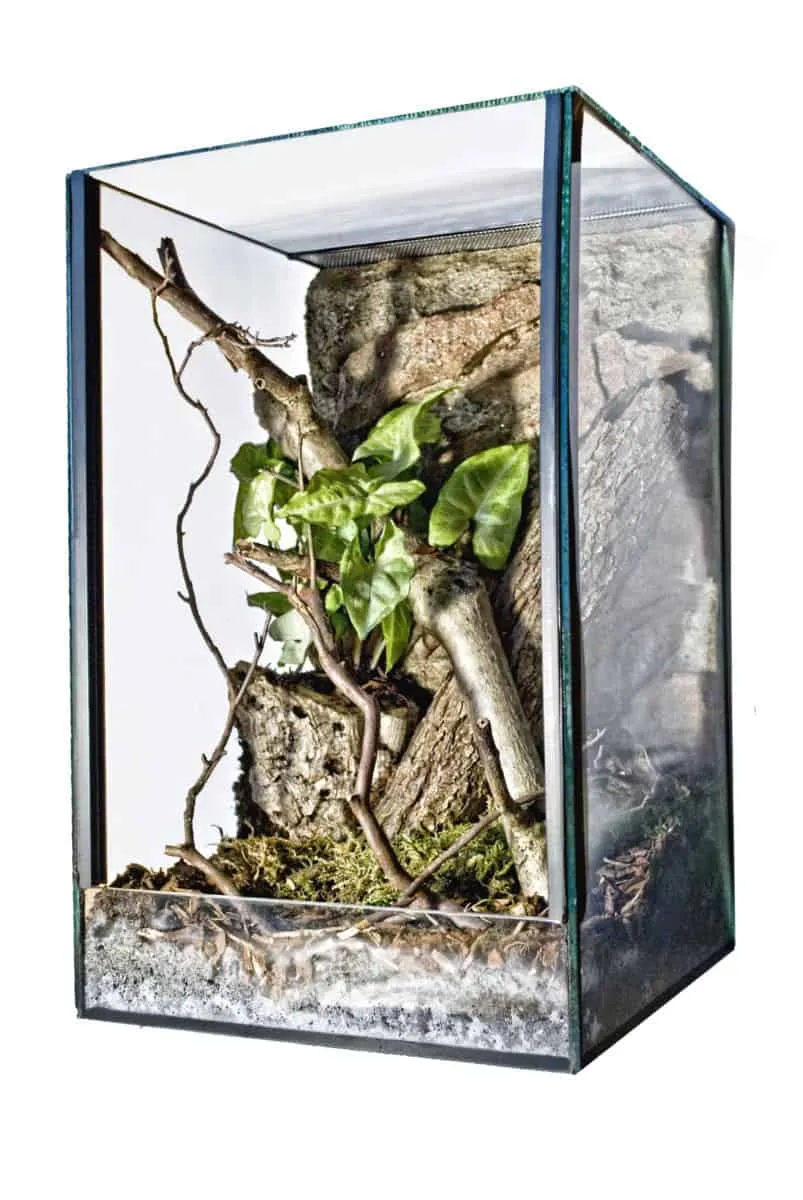
Different tarantula species have different needs. Terrestrial tarantulas require more floor space, while arboreal species need more vertical space for climbing. Researching your tarantula’s specific species is a must. Some tarantulas are more prone to burrowing, so they need a deeper substrate. Others are more active and need more room to explore. Understanding the natural habitat and behaviors of your tarantula species will help you choose an enclosure that best suits its needs. For example, a Pinktoe tarantula (Avicularia avicularia) needs a tall enclosure with plenty of climbing branches, while a G. rosea tarantula, needs a terrestrial enclosure with adequate floor space and hiding places.
Substrate and Ventilation
Substrate and ventilation go hand in hand in creating a healthy tarantula enclosure. The substrate, the material at the bottom of the enclosure, serves multiple purposes. It provides a surface for the tarantula to walk on, burrow in (for some species), and helps maintain humidity levels. Ventilation, on the other hand, ensures proper airflow, preventing the buildup of harmful mold and bacteria. Balancing these two elements is critical for the overall well-being of your tarantula. The right substrate and proper ventilation create a microclimate that mimics the tarantula’s natural environment, promoting its health and longevity.
Importance of Proper Ventilation
Ventilation is vital to prevent the buildup of stale air, mold, and bacteria within the enclosure. Poor ventilation can lead to respiratory problems and other health issues for your tarantula. The enclosure should have adequate cross-ventilation, with air entering from one side and exiting from the other. This ensures that the air is constantly circulating, reducing the risk of stagnant conditions. When selecting an enclosure, look for designs that incorporate ventilation features such as mesh tops or strategically placed vents. Proper ventilation helps maintain optimal humidity levels, prevents fungal growth, and overall contributes to a healthier environment for your tarantula. Consider ventilation placement near the potential patio location.
Substrate Options for Tarantulas
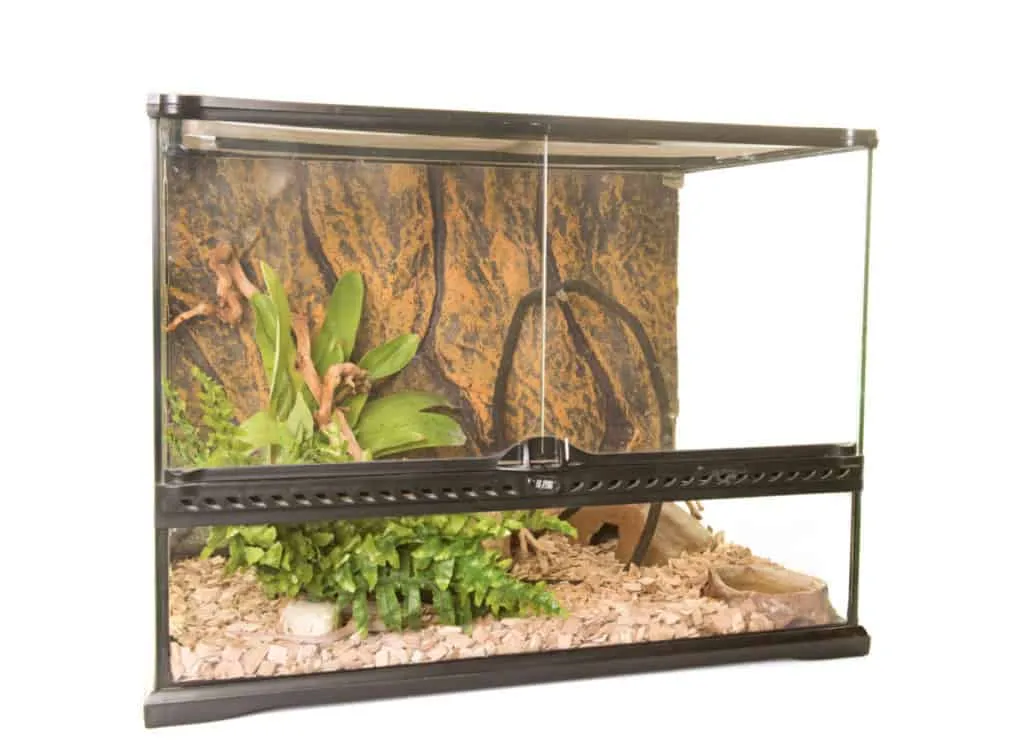
There are several substrate options available, each with its own advantages and disadvantages. Popular choices include coconut fiber, peat moss, vermiculite, and a mix of these materials. Coconut fiber is a popular choice because it holds humidity well and is relatively mold-resistant. Peat moss is another option, but it tends to be more acidic. Vermiculite can also be added to help retain humidity. Consider your tarantula’s species and its humidity needs when selecting a substrate. It’s essential to select a substrate that doesn’t contain harmful chemicals or fertilizers. The substrate should also be deep enough for your tarantula to burrow if it is a species that does so. Additionally, consider how easy the substrate is to clean and replace.
Essential Enclosure Features
Besides size, substrate, and ventilation, several other features are essential in a tarantula enclosure. These features contribute to the safety, comfort, and overall well-being of your pet. From secure lids to temperature and humidity control, these elements work together to create the ideal living environment. Investing in an enclosure with these features will significantly improve your tarantula’s quality of life and make it easier for you to maintain the enclosure properly. It’s about creating a habitat that caters to the tarantula’s needs, fostering a thriving and healthy environment. Pay attention to the construction and materials used, ensuring they are durable and safe for your pet.
Secure Lids and Escape Prevention
Tarantulas are escape artists, so a secure lid is non-negotiable. The lid should fit snugly and ideally have a locking mechanism to prevent accidental escapes. Make sure the enclosure you choose is designed specifically for reptiles or invertebrates and has a secure lid. Avoid enclosures with flimsy lids or those that are easily pried open. Regular checks on the lid’s security are a must. Additionally, the enclosure should be constructed from materials that your tarantula cannot easily climb or damage. Preventing escapes is critical not only for your tarantula’s safety but also for the safety of your household and any other pets you may have. A secure lid will help to prevent any unnecessary stress on your tarantula.
Temperature and Humidity Control
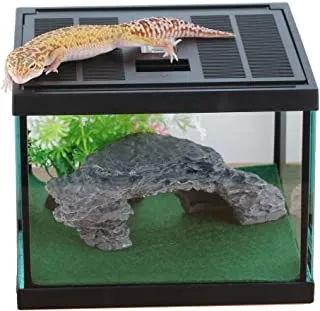
Maintaining the correct temperature and humidity levels is crucial for your tarantula’s health. Most tarantulas thrive in temperatures between 70-80°F (21-27°C). Use a thermometer to monitor the temperature inside the enclosure, and adjust the heat source if needed. Humidity requirements vary depending on the species, but generally, you’ll need to maintain humidity levels between 60-80% for most species. Use a hygrometer to measure humidity. You can increase humidity by misting the enclosure with water, adding a water dish, or using a substrate that retains moisture. Avoid placing the enclosure in direct sunlight or near heat sources that could cause drastic temperature fluctuations. Be sure to consider the location of your patio and any temperature and humidity changes in the area.
Decor and Enrichment
Adding decor and enrichment items to your tarantula’s enclosure can greatly improve its quality of life. Provide hides, such as cork bark or artificial caves, where your tarantula can retreat and feel secure. Include climbing structures like branches or driftwood for arboreal species. Live or artificial plants can also enhance the enclosure and help maintain humidity levels. Avoid using sharp or rough items that could injure your tarantula during a molt. Enriching the environment not only benefits your tarantula’s physical health but also its mental well-being. Providing a stimulating environment can reduce stress and encourage natural behaviors. Be creative and tailor the decor to your tarantula’s specific species and preferences.
Top 5 Best Tarantula Enclosures
Selecting the best tarantula enclosure involves considering several factors. Here are some of the top enclosures based on their features, ease of use, and suitability for various tarantula species. The following reviews are based on common enclosure types that are easy to find. Remember to consider your tarantula’s specific requirements when choosing. These enclosures vary in materials, size, and features, providing options for both novice and experienced tarantula keepers.
Enclosure 1 Review
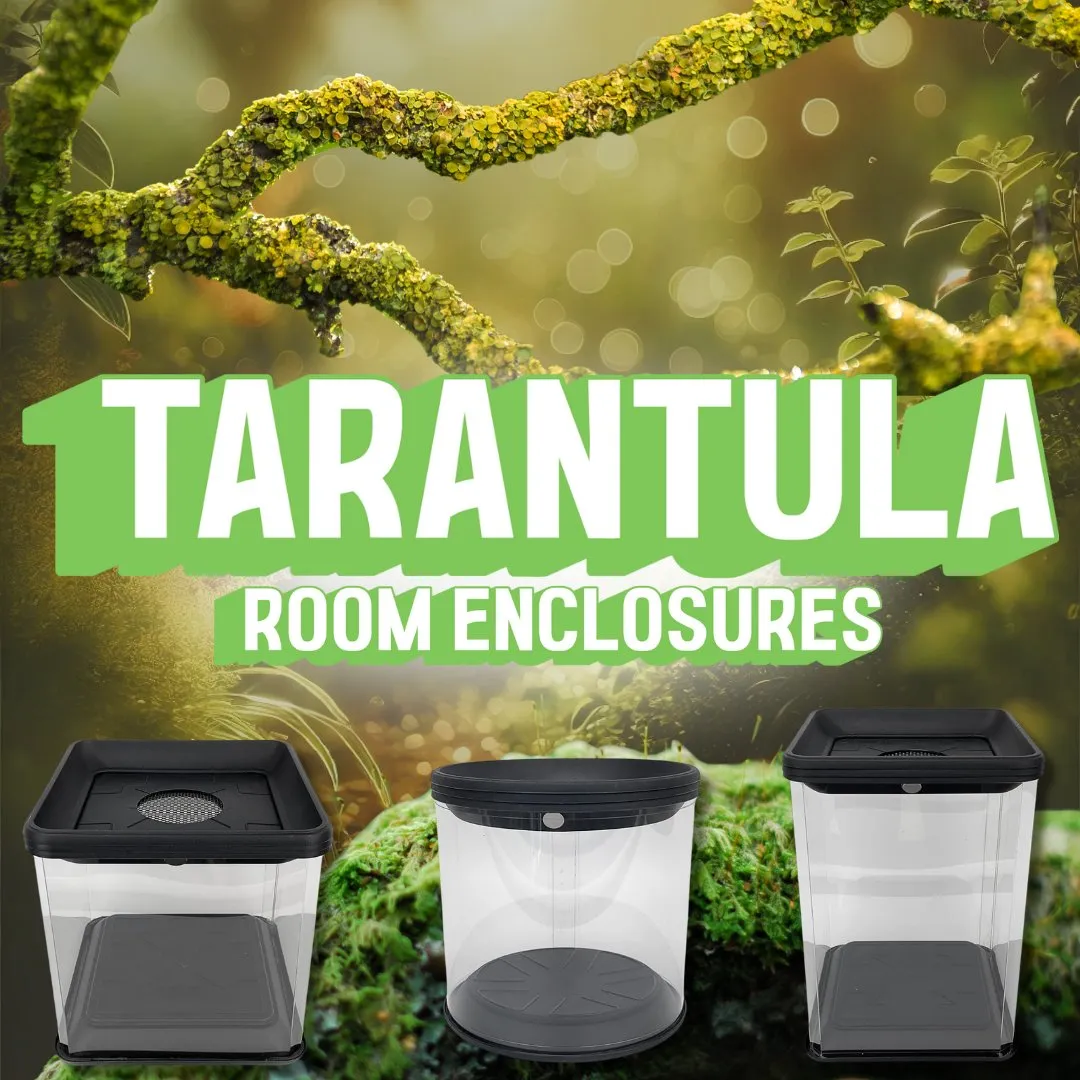
Enclosure 1 is an all-in-one kit designed for terrestrial tarantulas. It typically includes a clear acrylic enclosure with a secure lid, a pre-cut substrate, a water dish, and a hide. This enclosure is easy to set up and maintain, making it a great choice for beginners. The clear acrylic allows for excellent visibility, and the pre-cut substrate simplifies the setup process. Be sure to check the dimensions to ensure it suits your tarantula’s current size and potential growth. Overall, this enclosure provides all the essentials for a comfortable and safe habitat for your pet tarantula.
Enclosure 2 Review
Enclosure 2 is designed for arboreal tarantulas. This enclosure features a tall, vertical design with a secure mesh top for ventilation. It typically includes climbing branches and a substrate suitable for arboreal species. The height allows your tarantula to exhibit its natural climbing behaviors, and the mesh top ensures proper ventilation. This enclosure is a great choice for species like the Pinktoe tarantula. Check the mesh for any sharp edges before introducing your tarantula to the enclosure. Proper care and attention will keep your arboreal tarantula healthy and thriving.
Enclosure 3 Review
Enclosure 3 emphasizes excellent ventilation. This enclosure is made of clear plastic with numerous ventilation holes or mesh panels. It provides superior airflow, which is crucial for preventing mold and maintaining optimal humidity levels. It often includes a built-in feeding ledge. The emphasis on ventilation makes it ideal for species that require drier conditions. Regular monitoring of humidity and temperature is necessary to make sure the enclosure provides the optimal environment for your tarantula. Check ventilation placement near the potential patio location.
Enclosure 4 Review
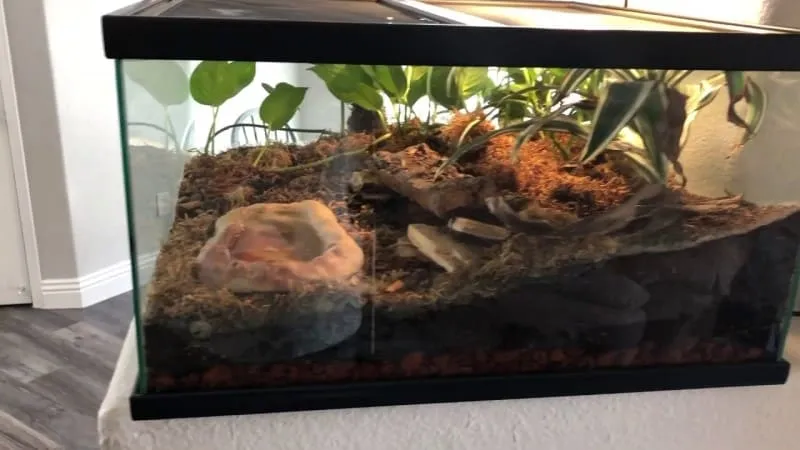
Enclosure 4 is constructed with a focus on security. It features a locking lid system and a durable build, providing maximum protection against escapes. This is particularly important for tarantula owners who are concerned about accidental escapes or have curious pets or children. This enclosure usually comes with a pre-drilled hole for a thermometer or other monitoring equipment. The secure design provides peace of mind, knowing your tarantula is safe and secure. However, ensure the locking mechanism is easy to use for you to maintain the enclosure.
Enclosure 5 Review
Enclosure 5 focuses on ease of maintenance. It is often made of materials that are easy to clean and features a design that simplifies substrate changes and other maintenance tasks. This is useful for those new to tarantula keeping. Easy maintenance helps to ensure the enclosure is always clean and sanitary, reducing the risk of health problems for your tarantula. However, this enclosure must also meet ventilation, security, and temperature requirements. Maintaining the enclosure is critical to a healthy tarantula.
Maintaining Your Tarantula Enclosure
Maintaining your tarantula enclosure is essential for the health and well-being of your pet. Regular cleaning, monitoring of environmental conditions, and providing fresh food and water are all part of proper enclosure maintenance. A well-maintained enclosure not only keeps your tarantula healthy but also prevents the buildup of odors and potential health hazards. Creating a consistent maintenance schedule will help you manage the enclosure effectively and ensure a long, happy life for your tarantula. Setting up a good maintenance routine will prevent problems and make your tarantula keeping a rewarding experience.
Cleaning and Maintenance Schedule
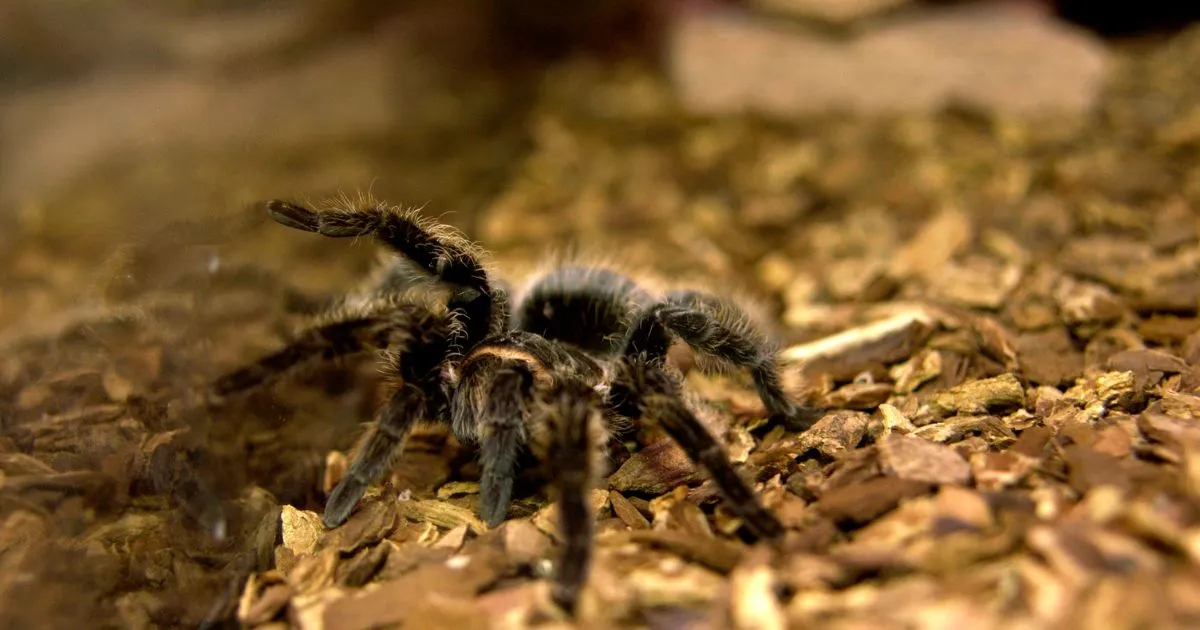
Establish a regular cleaning schedule to keep your enclosure clean and sanitary. Spot-clean the enclosure daily by removing any uneaten food and waste. Perform a partial substrate change every 1-2 months, depending on your tarantula’s species and the substrate used. This involves removing a portion of the old substrate and replacing it with fresh material. A full substrate change should be done every 6-12 months, or when the substrate becomes heavily soiled or impacted. Disinfect the enclosure periodically using a reptile-safe disinfectant. Always remove your tarantula from the enclosure before cleaning and ensure the enclosure is thoroughly dry before returning it. Cleaning schedules are species-dependent.
Monitoring Humidity and Temperature
Regularly monitor the temperature and humidity levels within your tarantula’s enclosure using a thermometer and hygrometer. Adjust the heat source or misting schedule as needed to maintain optimal conditions. Keep a close eye on the enclosure’s environment, especially during seasonal changes or if you notice any changes in your tarantula’s behavior. Adjustments to the heating or humidity may be needed based on where your enclosure is placed, such as a patio. Maintaining consistent temperature and humidity levels will help prevent molting problems and ensure your tarantula’s health. Creating a detailed record of these measurements can help identify trends and provide insights into any issues your pet might be experiencing.
